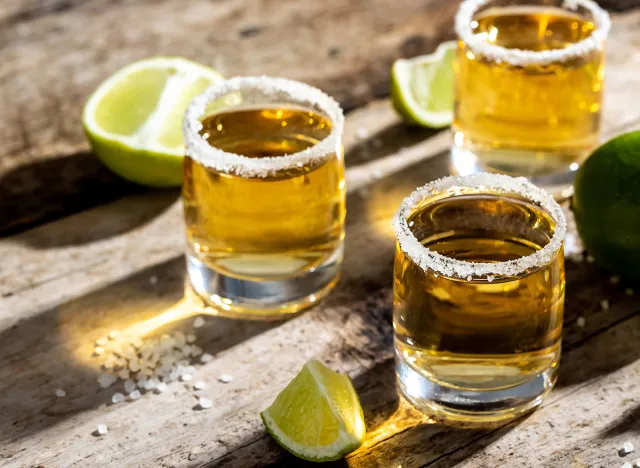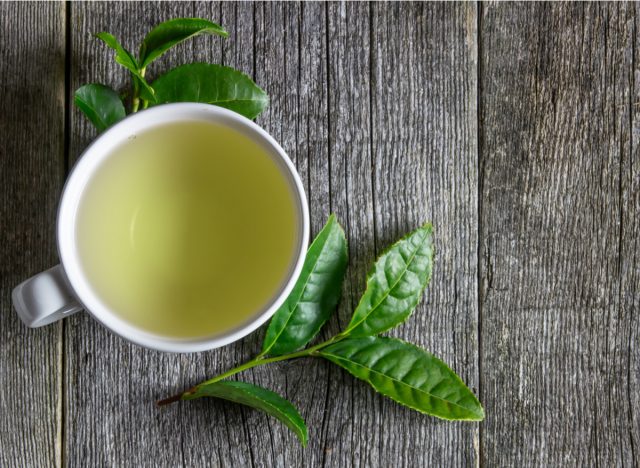It’s important to make sure we aren’t looking at all types of body fat as equal. For example, there’s subcutaneous fat, which is a protective fat found right underneath the skin and around your hips and thighs. This type of fat isn’t nearly as dangerous as what is known as visceral fat— the fat located around the internal organs in your abdominal area. There are ways you can work on losing the more dangerous fat, including making changes to your diet. You can even practice simple drinking habits to shrink visceral fat so that you lower some of the risks associated with carrying it in excess.
According to a study from the University of Illinois at Chicago, there is a strong link between too much visceral fat and insulin resistance, metabolic disease, and even an increased risk of death. Harvard Health also notes that visceral fat is linked to higher LDL cholesterol levels (the ‘bad’ kind), and lower HDL cholesterol (the ‘good’ kind).
This can impact anyone, but once you’ve hit the age of 50, you may want to keep a closer eye on this type of fat. For one, your risk for heart issues and diabetes can increase as you get older, and higher levels of visceral fat can raise your risk for these problems even further. Technically, your risk for heart disease is at its highest after the age of 65, but this means your 50s are the perfect time to start incorporating healthy practices in your daily routine so they can become second nature by the time you’re in your 60s. Another reason to focus on your visceral fat levels after 50 is that in general, it becomes more difficult to lose weight as you get older because of slower metabolism and loss of muscle mass, which means it may require more effort and energy in order to keep your visceral fat at a healthy level.
With these things in mind, how can we manage our visceral fat levels after the age of 50? To find out, we talked with Lauren Manaker, MS, RDN, registered dietitian, author of The First Time Mom’s Pregnancy Cookbook and Fueling Male Fertility, and member of our Medical Expert Board, about some drinking habits that can help.
It’s also important to note that while changing your diet can contribute significantly to visceral fat loss, incorporating exercise, getting enough sleep, and lowering your stress when possible are all helpful in losing this fat as well. Read on, and for more on how to eat healthy, don’t miss Eating Habits to Lose Abdominal Fat As You Age, Say Dietitians.


It may not feel like much since it’s only one glass, but research published in the The Journal of Nutrition shows that one soda a day is associated with greater visceral adipose tissue—also known as visceral fat.
Soda consumption is also associated with speeding up the aging process, so the side effects of drinking soda after your 50s is twofold. Not only is it likely to contribute to more fat around your abdominal organs, but a study published in the American Public Health Association found that drinking a daily soda was associated with almost two additional years of aging in healthy adults.
Although the occasional soda in your 50s is a perfectly fine treat, nipping the habit of daily soda drinking in the bud as soon as possible can help lower your risk of visceral fat and aid in a healthier aging process overall.


When it comes to any type of weight loss, limiting your alcohol consumption is usually helpful because of the empty calories it can lead to. Manaker warns that when it comes to visceral fat, this is especially true.
“While a once-in-a-while cocktail is OK, too much alcohol can cause the body to store fat as visceral fat, and is often linked to an increased waist circumference,” says Manaker. “Stick to a mocktail or sparkling water instead.”
READ RELATED: Construction worker feared he would lose his penis 'after black widow spider bit his member'
As mentioned earlier, your body undergoes changes related to metabolism and muscle mass as you age, so your ability to manage a desired weight can shift as well. Adopting these habits in your 50s can help you tackle visceral fat in your 60s and 70s, when your metabolism slows even more and committing to a regular exercise routine may be become more difficult.


Green tea is one of the healthiest drinks you can have. Not only can it help reduce your risk of cancer, improve your brain health, and help your dental health, but it is also linked to weight loss as well. This tea’s weight loss properties come from its powerful compounds—called polyphenols—which are known to improve metabolism, something that can be especially important as metabolism begins to slow down in your 50s and 60s.
And those trying to lose the dangerous fat around their abdomen will be pleased to know that “A study on Chinese adults with excess abdominal fat found that green tea consumption over a span of 12 weeks was linked to visceral fat loss,” says Manaker.


It’s understandable that when you’re trying to shed some pounds, you may try replacing sugar with artificial sweeteners., or switching out regular soda for diet. Unfortunately, Manaker warns that these sweeteners may actually lead to more weight gain around your belly.
“Many people lean on artificial sweeteners when they are trying to limit their sugar intake, but drinking beverages with these sweeteners in excess may result in fat being deposited as visceral fat,” she says.
If you’re currently in your 50s, you’ll likely begin to experience changes in your metabolism over the next decade or so of your life. That said, you may want to start lowering your intake of artificial sweeteners now. This can give you time to break a habit of drinking diet sodas or other artificially sweetened drinks, as well as the time to find other drinks you enjoy.


And lastly, staying hydrated is one of the easiest drinking habits to shrink visceral fat and manage overall weight loss. “Water contains zero calories and doesn’t cause weight gain when consumed, so drinking plain old H2O may be your best bet if you are trying to watch your visceral fat accumulation,” says Manaker.
While not directly linked to visceral fat or weight loss, new research shows that drinking water and staying hydrated is crucial to healthy aging. The newly published study from The Lancet found that chronic dehydration has the potential to actually shorten your lifespan and increase your risk of chronic disease. If you’re in your 50s and wanting to loose visceral fat while also lengthening your life, staying hydrated is a beneficial step.
A previous version of this story was published on January 19, 2022. It has been updated to include additional copy and proofreading revisions, additional research, and updated contextual links.
Source:











